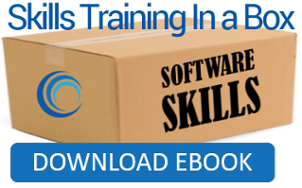 As an HR leader, you want to be heard by the leadership at your organization and contribute to the strategic plan, right? We wanted to give you a hand by offering a glimpse into this year’s top trends.
As an HR leader, you want to be heard by the leadership at your organization and contribute to the strategic plan, right? We wanted to give you a hand by offering a glimpse into this year’s top trends.
We suggest that you bring these 5 current issues to the table as you articulate your human resources strategic plan. Have conversations about these issues with your leadership. Consciously decide and explicitly state where your organization wants to be across each spectrum. All of this will help you figure out which trends might have a home in your strategic plan.
What is your strategy for keeping up with these HR trends?
1. Onboarding activities to help new hires through the entire first year
We’ve written before about the importance of onboarding. During that first year, you want frequent opportunities to reinforce that both the company and the individual have made the right choice. Have you revamped your onboarding in recent years to promote new employees feelings of belonging, and to ensure frequent communication and feedback with new hires? Make sure that your whole team, from managers to entry-level associates, is clear on concrete ways that they can ease the entry for new folks during that whole first year.
Apparently, organizations are not doing as well as we hoped in the onboarding arena. According to the O.C. Tanner Institute, “Recent focus group research reveals onboarding strategies should address new hire feelings of belonging, include clear expectations for day one through the first year, and provide more communication and feedback than is currently given.” (the emphasis is mine)
2. Is there a gap between where you are actually spending your time and where CEOs think HR leaders should be spending their time?
A recent Harris Poll survey of CEOs and HR executives revealed that CEOs think their HR executives are spending their time on training and development, diversity and inclusion, and running employee programs. While in reality, HR executives report that they are spending their time on compensation and benefits, employee relations, recruiting, and onboarding.
CEOs in the survey said that they would like HR leaders to spend more time on talent management, employee rewards and compensation and less time on employee brand, internal communication, and HRIS.
In your quest to be more strategic, be sure you are clear about what is most important to your senior leadership. Then you can ensure that your priorities are aligned and that resources are being used to best advantage.
3. Employee engagement is (still) a hot topic
The research that’s coming out continues to support a strong relationship between employee engagement and successful business outcomes. Everybody seems to be talking that talk now. It’s time to make sure that your systems are all in place to walk the walk.
“Increasingly, organizations are focusing on improving their employee engagement to drive better performance,” writes Amit Jain in this article for Forbes.
Looking for concrete steps you can take? Here is a 5 week plan for improving employee engagement and motivation.
4. Revisit your approach to recognition and reward
Meaningful recognition continues to play an integral part in creating an environment where people are inspired to do great work. Recognition is strongly linked to how an employee perceives their standing at work.
A study highlighted in Great Work by David Sturt found that the more often employees feel appreciated and valued for what they’ve done, the more likely they’ll repeat the behavior. Consider putting a formal recognition program in place if you don’t already have one.
5. Be ready for more millennials
According to PwC research, Millennials will account for nearly half the global workforce by 2020.
Organizations that want to attract and retain talent in the months and years to come will need to tune in to these digital natives and ensure that their employment journey is supported in ways that this generation finds engaging.
As Baby Boomers continue to retire at an accelerating rate, predictions estimate that their immediate successors within Generation X will only be able to fill half of their positions, leaving the remainder open to less-experienced Millennials. If your team is prepared to develop and support Millennials as they fill those roles, you will come out way ahead of the game.








